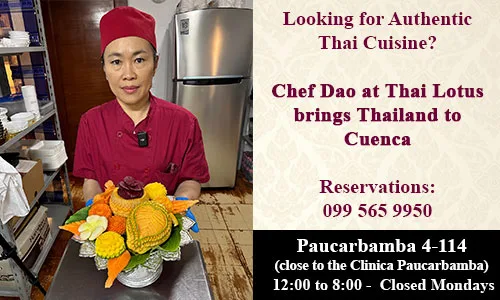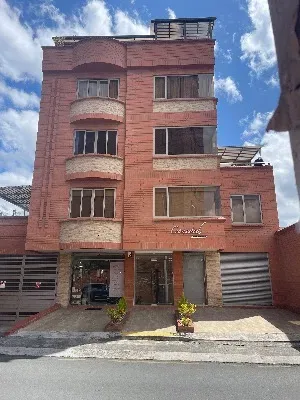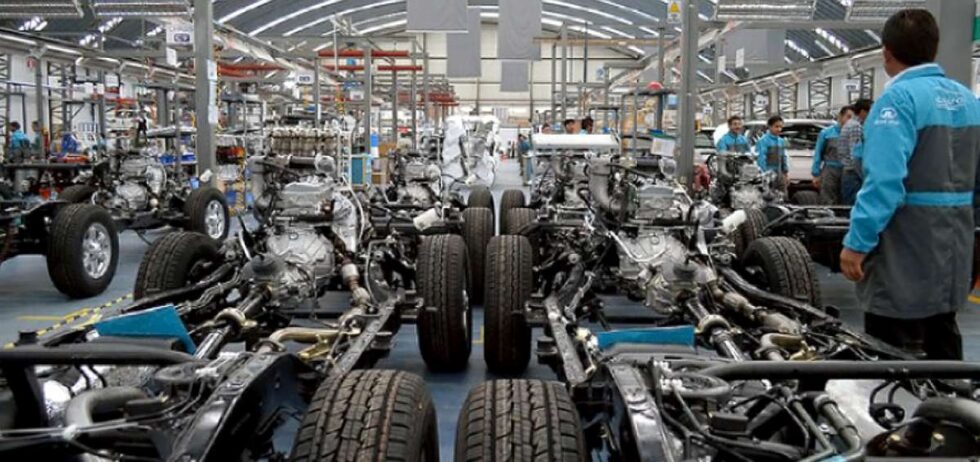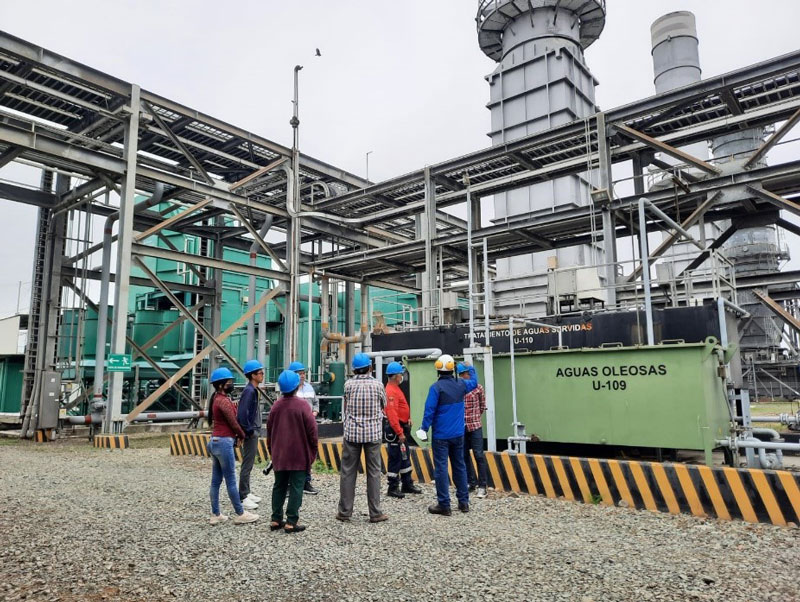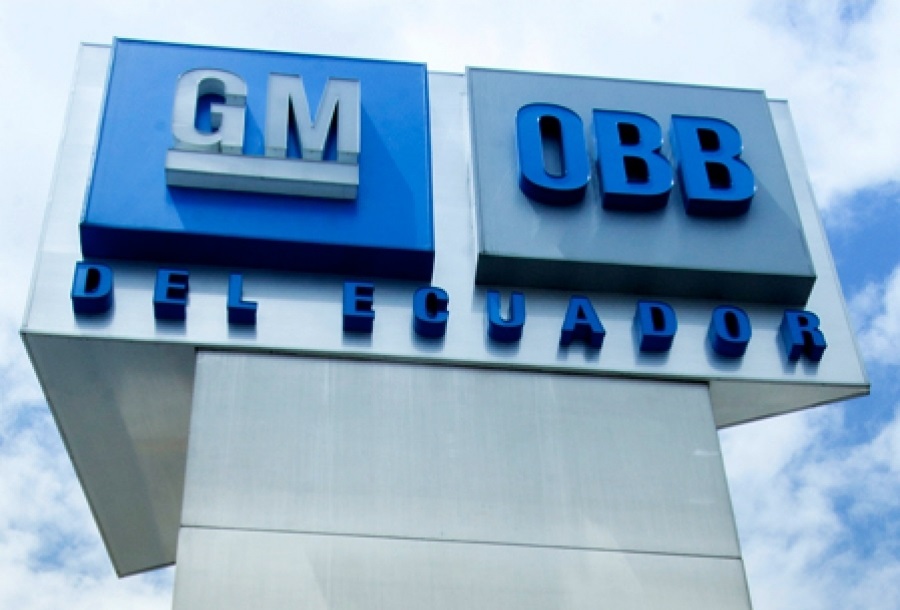A gringo’s guide to northern Peru, Part One: The obligatory introduction

This dirt road is where the mule trails of the Moyobamba Route left the town of Cascas and headed into the Andes..
Editor’s note: This is the first of a six-part series by Don Moore, a former Peace Corps volunteer in Honduras who developed a fascination with northern Peru — and wrote a book about it. Don spent most of January in Cuenca.
By Don Moore
It seems like every book, article, or website about visiting Peru focuses on the same handful of places – Lima, Cuzco, Machu Picchu, and Lake Titicaca with maybe a few paragraphs about the beaches. They would have you believe that everything worth seeing in Peru is way down south. But it wasn’t always that way.
seeing in Peru is way down south. But it wasn’t always that way.
In the 1800s and early 1900s thousands of foreign adventurers traveled across northern Peru on what was known as the Moyobamba Route. Then, in the early 1900s railroads opened up in central Peru and the recently discovered ruins of Machu Picchu captured the world’s imagination. Travel on the old Moyobamba Route faded away and northern Peru went from being someplace to being no place.
As adventurous travelers have recently discovered, northern Peru never deserved to become a no-place. Even Peru’s Ministerio de Turismo agrees as it’s begun to promote the region in hopes of taking some strain off sites in the over-visited south. So what’s to see and do?
The Pacific coast and central sierra are home to colonial cities and towns, pre-Inca ruins up to three-thousand years old, and archaeological museums filled with golden treasures and thousand-year-old mummies. Some of the highest waterfalls in the world are just two days’ travel from Cuenca. The mountain landscapes will take your breath away, as will the drops off the side of the road in a few places. Peru may have the best cuisine in South America and it certainly has more regional variations than anywhere other than Brazil. And the eastern jungle is home to dozens of fruits that even the market vendors of Cuenca have never heard of.
In this series of articles I hope to introduce you to what you need to know to journey “south of the border” from Ecuador. The focus will be on off-the-beaten-path overland travel using local transportation. If that’s not your thing, don’t stop reading. Most of the locations can be reached by air from Lima.
Before we get to destinations, we have to talk logistics. Getting around Peru is not the same as getting around Ecuador. With the exception of along the coastal Pan-American Highway, travel in Peru is harder. The roads are generally not as good and using local transportation isn’t quite as smooth. If you haven’t already traveled overland in Ecuador, don’t do Peru first. As always, a flexible attitude is the most important thing to take with you. Travel in Latin America is never for people who can’t go with the flow of things and that is especially true in Peru’s interior. And, of course, at least a little knowledge of Spanish will go a long way.

Mules are no longer the preferred method of transport in northern Peru.
Transportation in Peru
Historical travelers on the Moyobamba Route rode mules, walked through jungle, and floated downstream on canoes. The internal combustion engine changed that and now travel is by motor vehicles on paved roads … or almost always paved. Just as in Ecuador, you can get almost anywhere using some form of motorized public transportation. But getting around Peru is more complicated than in Ecuador or anywhere else in South America for one key reason — with a few exceptions, major towns and cities do not have central bus terminals. Instead, each agency operates from its own little terminal. Usually they are at least in the same general part of town, but agencies offering service to the same destinations may still be blocks apart. Yes, Cuenca has a few luxury van companies along Remigio Crespo on the opposite side of town from the bus terminal. But imagine if all the bus companies in the terminal were also scattered at their own little offices about the city.
What this means to the traveler is that if you are in Cajamarca and want to get to Celendín, it’s going to take some footwork to check out your options. (Only the biggest bus companies have websites.) Or when it’s time to leave just tell the taxi driver to take you to where there’s transportation to Celendín and hope the wait won’t be too long. As bad as this situation sounds, it’s mostly only a problem for the long-distance routes between major cities. Heavily traveled nearby regional destinations will have frequent transportation all day long. Maybe the taxi driver dropped you off at an agency that leaves in an hour when there’s another place six blocks away that leaves in fifteen minutes. But you don’t know that, so just use the time to catch up on your reading.

Linea is a mid-priced long distance bus company in Peru.
One aspect of transportation that Peru excels at is top-end bus service. I have traveled all over South America and nowhere – not even Argentina or Chile – has better luxury bus service than Peru. The Crucero Suite service on the Cruz del Sur line is like traveling first-class on an airliner. Other companies such as Oltursa, Ormeño, Transportes Chiclayo, and Movil Tours have similar top-end service with stewardesses and snacks (sometimes meals), blankets, and pillows. I’ll take a twelve-hour overnight ride on Cruz del Sur over a six-hour international flight in coach anytime. And, the prices are reasonable. Depending on the route and level of service, prices for long-distance trips on high-end buses generally run between $25 and $50. While you can usually walk into a bus company office and get a ticket for the next bus to your destination, it’s usually a good idea to buy at least a day ahead of time.
If nothing else, you’ll guarantee yourself a better seat.
So what makes travel in Peru more difficult than in Ecuador? First, not all bus companies are Cruz del Sur or Oltursa. Others offer different levels of service at different prices. Linea is a good mid-priced company and fine for daytime travel but I wouldn’t use them for a long overnight route. But the real difference is this: while large buses are the primary means of travel between the big coastal cities, in the interior they are primarily used for only long-distance (often overnight) routes. Travel on short and mid-distance routes in the interior is primarily by combi or colectivo.

A combi on a remote mountain road.
A combi is the Peruvian name for a passenger van seating anywhere from six to around twenty passengers. Seats are assigned by the driver or an assistant on a first-come basis. The first passenger gets to ride shotgun and the last ones get the middle seat in the back row and an uncomfortable fold-down seat in the aisle. But the driver has final say on who sits where and twice I’ve had drivers make other passengers move to the back because he wanted the old gringo in the front seat to talk to. In a few places combi agencies operate scheduled service but the more common pattern is that the combi doesn’t leave until it’s full or nearly so. The first passenger may get the best seat but has the longest wait. Still, combis run on heavily-traveled routes and I don’t think I’ve ever waited more than an hour for one to fill up.
A colectivo is a car or SUV with room for four to six paying passengers. They usually cost half-again to double what combis do on the same route but are faster and more comfortable. Again, seats are usually assigned on a first-come basis with the last person getting the middle-back. Like combis, colectivos don’t have schedules and only leave when full. However, sometimes if the car is short a passenger the others waiting will agree to split the final fare rather than continue waiting. If you’re traveling with three or four friends you could just hire the entire car and driver.

Waiting for one more passenger for a combi in the jungle town of Juanjui. That’s my orange suitcase on top.
One thing combis and colectivos have in common is limited interior luggage space. Combis have a back door which opens into a hold under the back row of seats and colectivos have whatever trunk space that particular make of car comes with. But if the passengers have too much luggage then the extra ends up on the roof rack. This is especially likely if you are one of the last passengers. The drivers and their helpers are very good about covering the roof rack with a plastic tarp and tying everything down, but that’s no guarantee things will stay dry in really heavy rainstorm. Two years ago my combi from Tarapoto to Yurimaguas went through a two-hour long downpour. My hard-shell suitcase was in the middle of the pile on the well-covered roof. Still, enough water made its way underneath the plastic and then through the zipper of my bag that half my clothes were soaked. The lesson learned was that clothes and anything that can get water-damaged should always be in plastic bags.
Both combis and colectivos run on most routes in northern Peru, but there are a few areas where there are only combis and some of the smallest towns are only served by colectivos. If I’m feeling cheap, I take a combi. If I want to enjoy some company, then I take a colectivo. Perhaps it’s because a car is a smaller and more intimate space than a combi or a bus, but I find fellow passengers in colectivos to be generally friendlier and more interested in talking to the visiting gringo. I’ve made some great temporary friends in colectivos. On the other hand, there was the time I had the middle seat in the back and the young lady on one side and the old man on the other fell asleep before we were out of town. I spent the rest of the three-hour journey with their heads resting on my shoulders. Yes, travel by colectivo can be an intimate experience.
More good things to know
Peru’s mountain roads are even curvier than those in Ecuador so it’s a good idea to have a few plastic bags with you. I don’t get carsick but there have been a few times I’ve handed a bag to another passenger.

It isn’t easy to keep dry in a moto-taxi in a rainstorm.
If taking a big overnight bus, never leave a knapsack in the overhead rack. A dishonest passenger getting off at an intermediate stop might take it while you are sleeping.
Get used to traveling around town by moto-taxi, a.k.a. tuk-tuks. With two exceptions, automobile taxis are nowhere to be found in the towns and cities of the northern interior. Regular taxis are used in the big coastal cities.
I don’t know of anywhere in Peru where the tap water is safe to drink.
Peru uses 220 volts, not 120 as in Ecuador and North America. Today, most laptops, phone chargers, and other small personal appliances are dual-voltage, but you should confirm that by looking at the small print on the device.
Sanitation in Peru has improved significantly since my first visit there in 1985. Nevertheless, I am more careful there than in Ecuador. My rule about restaurants is to ask myself who eats there. If it’s a middle-class restaurant serving people like office workers, then I don’t worry. If it’s clearly a working-class establishment, then I avoid salads and water-based drinks.
The best time of year to visit northern Peru is from late April through September when there is little rain. October, February, and March are the rainiest months. July and August are the coolest months, like in Cuenca. While the northern coastal desert should be free of rain all year, in February and March of 2017 and again in 2019, the area was hit with El Niño related torrential rains and widespread flooding. So it is probably best to even avoid the desert for those two months.
Peru has the same big cellular companies as Ecuador but your Ecuador SIM card will probably not work there. (Check your plan.) Prepago (prepaid) SIM cards are easy to get with either Claro or Movistar and plans are cheaper than in Ecuador.
The government-owned Banco de la Nacion is one of the few banks that doesn’t charge an ATM fee and they can be found in just about any town of any size. When searching for them on Google Maps, be sure that what you found is a bank/ATM and not an authorized agent. Agents are small stores that collect things like utility payments on behalf of the bank. ATM withdrawals are usually limited to between 400 to 700 soles (roughly $125 to $200).
Northern Peru is overall much safer than the tourist-filled south. The kind of people who prey on naive gringos go to where there’s opportunity, and that’s down south. Still, pickpockets and petty thieves can be found anywhere. Take normal precautions, especially in the bigger cities on the coast.
Next: How to Get From Here to There
Useful Links
Peruvian Food: https://gringoinca.com/food-to-try-in-peru
More Travel Tips: https://www.tourinperu.com/plan-organize-trips-peru
More Travel Tips: https://www.metrojourneys.com/blog/everything-need-know-before-travel-peru/
About Peruvian Buses: https://www.tripsavvy.com/peru-by-bus-1619753
_____________________
Don Moore is the author of Following Ghosts in Northern Peru: In the Footsteps of 19th Century Travelers on the old Moyobamba Route. In 2017-2018, he spent several months retracing the old trade route that linked Peru’s Pacific coast with the Amazon. His book mixes stories from historical travelers in the region, Peruvian history, and his own experiences on the back roads of northern Peru. The book is available in both Kindle and soft-cover versions. More information and photos to accompany the book can be found at his website: http://www.DonMooreDXer.com/books/








